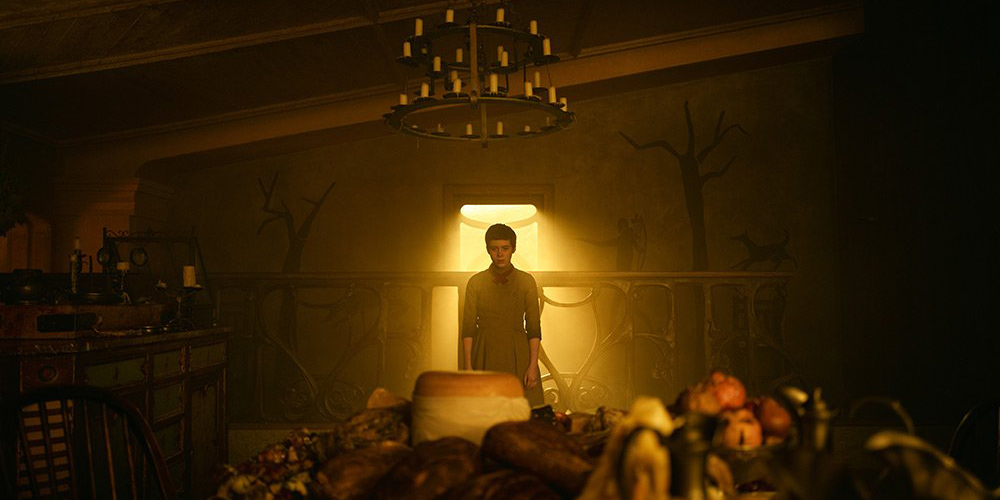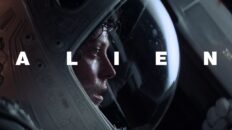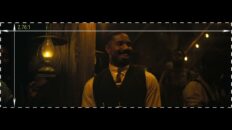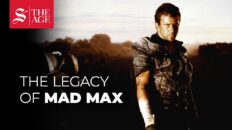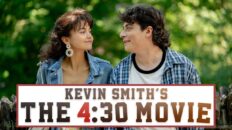“What is to become of us? How are we to feed our poor children, when we no longer have anything for ourselves?” – The Wood-cutter, “Hansel and Grethel”
“Nothing is given without something else being taken.” – Gretel, Gretel & Hansel (2020)
“The proletariat only perfects itself by annihilating and transcending itself, by creating the classless society through the successful conclusion of its own class struggle. The struggle for this society, in which the dictatorship of the proletariat is merely a phase, is not just a battle waged against an external enemy, the bourgeoisie. It is equally the struggle of the proletariat against itself[,] against the devastating and degrading effects of the capitalist system upon its class consciousness.” – Georg Lukacs, “Class Consciousness” (1920)
In the original Grimm Brothers fairy tale, the poor wood-cutter and his wife devise a plan to lead their two children, Hansel and Grethel, deep into the woods, leave them with a bit of bread, and walk away from them in hopes they cannot find their way back home. Why do they do this? Because they are poor and there is mass scarcity in the land. More people in a household requires there be more resources, more work opportunities, and more food. Cut the number in half and the odds of survival for the remaining increase exponentially. It is, by any measure, a logical plan, albeit a very Malthusian logic.
Various interpretations of the story’s themes could be acknowledged throughout the narrative of the original fairy tale, including Osgood Perkins’ new screen adaptation, Gretel & Hansel, for Orion Pictures. Considering a good portion of these 19th century stories have been commodified by Disney to the point of being toothless, it is always a pleasure to see adaptations that seek to inject those elements back in. Perkins is the perfect match for delivering the full terror of the original story while utilizing it to comment on several aspects of the current cultural milieu.
If the original story is known to the viewer, there shouldn’t be any surprise about the beats of the film’s narrative. The mother in the film pushes the children out into the woods due to scarcity of jobs and food. They meet an old lady who turns out to be a witch that tries to cook and eat them. The children overtake her in the end. And they are able to utilize her resources in the wake of her defeat. All without any breadcrumbs involved (unlike the original story).
However, Perkins adds just enough characterizations and thematic heft that the cannibalistic witch ends up being the least of what the audience should dread about the film. There are questions of female agency in a patriarchal society, the economic conditionality of society, and how fairy tales and fables prepare us for the cruelty and indifference that this world offers especially to the least of these. Yet one of its more subtle themes revolves around its commentary on the economic conceptions of scarcity and abundance.
Returning to the cold logic of the mother in both versions of the story, people who find themselves in poverty end up having to make difficult choices that end with lack or scarcity for either themselves or their children. Just under 25% of the U.S. population lives below the poverty line and, on any single night, .2% of the population (roughly 550,000) is homeless and 1.4 million will utilize a shelter within a given year. The picture only gets more complicated as one narrows their focus on singular cities. This picture paints the increasing polarization of the retention of wealth in the U.S. The top 20% of households own 90% of the stuff in America which leaves the other 80% of the country with an unequal split of the remaining 10%. The bottom 20% of households owe more than they have. They quite literally live in debt and/or homelessness. There is abundance and scarcity and not much in between.
It is poignant then that the way Perkins frames this story is one that parallels how class structures—and their corresponding consciousness—remain in this country and where we might be headed if these trends continue. In the film, the visceral draw of the feast on the table that the children find is the promise of abundance meant for anyone who works hard enough for the dangling carrot of life, liberty, and the pursuit of property. Yet as the film goes on, this promise is shown for what it really is: a lie built to make those who are poor salivate for more regardless of the destruction it does to their own class consciousness. The specifically Capitalist version of individualism that has plagued this country from its inception is rigged. The feast is dangled in front of Hansel and Gretel to draw them in, to start working for it, to seek the ever-elusive safety net promised, and eventually become another consumer cog. Those who look harder and find their way into the inner chambers discover that what holds the system up remains the violence done to the vulnerable, inevitably feeding the existing structures.
Midway through the film when Gretel starts to question the motivations of the old lady and is trying to convince Hansel to leave with her, she asks what may be the most significant question of the film: where does all this abundance come from? Holda does not have animals and she doesn’t go to the market, but somehow an abundance of food is offered at each meal. The climax of the film takes place when Gretel witnesses Holda’s youthful being in the cellar of the house as she spreads out the miscellaneous limbs and guts of all the children that came before them—the children of scarcity who were drawn by that same abundance—and magically transforms the gore into the glorious, rich feast which Gretel and Hansel had been devouring unwittingly. They were eating their own the whole time. They became literal consumers.
The insidious trap of the specifically American Capitalist system is that consumption is often the scourge of the bottom forty percent of the country, those who are already below the poverty line and have more debt than assets. They are consuming the products made by others who work 40-80 hours a week for minimum wage—if they are lucky to have honest employers. It becomes a vicious cycle for the lowest class and they end up hurting their own class instead of climbing the ladder that the American dream promises.
The ambiguous ending of the film finds Gretel in a context where she begins to take on a very specific physical resemblance to Holda: her fingers become charcoal black. The part of the body that represents work the most. Yet if Holda is the representation of the Capitalist machine which turns workers into commodities, then the power she has attained is problematic if used as Holda had. This seals the metaphor. What are the workers to do when they have seen behind the curtain? When they see the strings of consumption? Do they continue as cogs in order to attempt to become part of the 20% or do they seek to release the captives, the children of scarcity, and form a united consciousness? Gretel and Hansel’s meditation on abundance and scarcity as reflected in American society today may be the film’s most dreadful element, because sometimes the truth is more terrifying than fiction.
Whether these ideas were consciously part of the writing and making of this film, it’s impossible to ignore its economic implications as we see the brutal cycle of Holda’s murder of the poor in order to continue the Capitalist structures in our society. This false consciousness is so strong that it is anything but assured that those who see the truth will join the struggle against it. When we leave Gretel at the end of the film, the question of how she uses her power and knowledge is left in tension. A true class consciousness demands we unite with those who struggle against the owners of the means of production instead of individually consuming each other to live this grand American lie.


